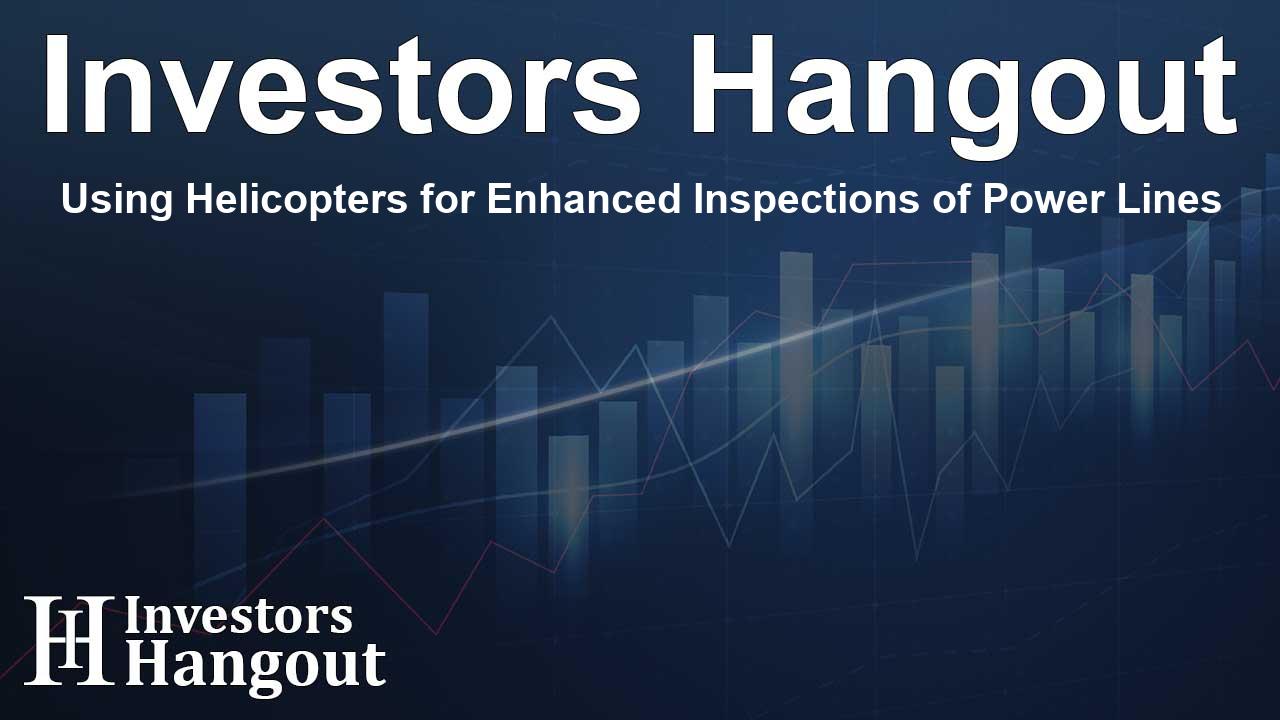Using Helicopters for Enhanced Inspections of Power Lines

Helicopters and Thermal Imaging: A New Era in Power Line Inspections
Aerial inspections have transformed how utility companies monitor high-voltage power lines, ensuring that power remains reliable and uninterrupted. FirstEnergy Corp. (NYSE: FE) is leading the way with these proactive measures spanning nearly 5,000 miles of high-voltage power lines, using advanced infrared and ultraviolet (IR/UV) technology.
The Importance of Proactive Inspections
As summer approaches, utilities must prepare for higher energy demands, making regular inspections essential. The use of helicopters allows FirstEnergy to cover vast distances quickly, identifying invisible equipment issues that could lead to service interruptions. By employing such technology, the company improves the reliability of its power delivery to customers.
Understanding Infrared and Ultraviolet Technology
The aerial inspections, performed at low flight speeds between 25 and 35 mph, employ an infrared and ultraviolet camera mounted on the helicopter. This technology allows the onboard thermographer to visualize electrical components in ways traditional inspections cannot achieve. The infrared camera detects heat anomalies which can indicate overheating equipment or voltage issues, while ultraviolet cameras find electrical discharge and other forms of deterioration.
Collaborative Efforts Across Regions
These infrared inspections are coordinated with several subsidiaries like American Transmission Systems Incorporated and Jersey Central Power & Light. In addition to revealing hidden problems, these IR/UV patrols work in synergy with visual inspections conducted annually, targeting obvious issues such as tree overgrowth and damaged poles. This comprehensive approach to maintenance helps maintain the integrity of the electrical grid.
A Commitment to Safety and Reliability
Mark Mroczynski, President of FirstEnergy Transmission, emphasized the importance of these aerial patrols in maintaining the reliability of the transmission system. "The transmission system is the first line of defense in preventing power outages because it supplies the electricity that flows into substations and along power lines to every single one of our customers. This work supports the vast investments we're making to strengthen our power system to meet the country's growing energy needs," he noted.
Each patrol identifies issues that are often invisible during standard inspections and denotes potential failure points, allowing for proactive maintenance before they can develop into more significant outages.
Coverage Across Key Areas
Currently, FirstEnergy's infrared inspections encompass various regions, including:
- Ohio – 1,046 miles of power lines, with nearly 64% completed.
- Pennsylvania – 2,220 miles of lines, with about 50% completed.
- New Jersey – 630 miles of lines, with about 42% completed.
- West Virginia and Maryland – 648 miles of lines, with about 20% completed.
The use of helicopters allows teams to swiftly survey extensive lengths of power lines, ensuring safety and preparedness to handle increased electricity demand.
Investing in the Future
This inspection initiative supports a broader strategy called Energize365, which emphasizes the modernization of the grid through substantial investments. The program aims to deliver reliable service now and in the future while accommodating the rise of electric vehicles and sustainable energy sources.
FirstEnergy plans to invest $28 billion between now and 2029 in this grid evolution effort, which will create a more robust and intelligent electrical grid that can adapt to future challenges while ensuring customer needs are met.
Maintaining Utility Excellence
FirstEnergy operates as one of the largest investor-owned electric utility networks in the nation, serving a broad customer base across regions. Its commitment is reflected in the operational excellence and integrity maintained throughout the organization as they work tirelessly to ensure that customers receive uninterrupted and safe services.
Frequently Asked Questions
What technology is used for the aerial inspections?
FirstEnergy employs infrared and ultraviolet (IR/UV) technology to identify equipment issues during aerial inspections.
How often are these inspections conducted?
The infrared aerial inspections are conducted every four years in conjunction with the company's subsidiaries.
What areas are currently being inspected?
Inspections are currently underway in Ohio, Pennsylvania, New Jersey, West Virginia, and Maryland.
Why are aerial inspections important?
Aerial inspections help detect hidden issues in electrical systems, preventing potential outages and service interruptions.
What is the Energize365 program?
Energize365 is FirstEnergy's multi-year grid evolution initiative focused on developing a more resilient electrical grid through significant investments.
About The Author
Contact Kelly Martin privately here. Or send an email with ATTN: Kelly Martin as the subject to contact@investorshangout.com.
About Investors Hangout
Investors Hangout is a leading online stock forum for financial discussion and learning, offering a wide range of free tools and resources. It draws in traders of all levels, who exchange market knowledge, investigate trading tactics, and keep an eye on industry developments in real time. Featuring financial articles, stock message boards, quotes, charts, company profiles, and live news updates. Through cooperative learning and a wealth of informational resources, it helps users from novices creating their first portfolios to experts honing their techniques. Join Investors Hangout today: https://investorshangout.com/
The content of this article is based on factual, publicly available information and does not represent legal, financial, or investment advice. Investors Hangout does not offer financial advice, and the author is not a licensed financial advisor. Consult a qualified advisor before making any financial or investment decisions based on this article. This article should not be considered advice to purchase, sell, or hold any securities or other investments. If any of the material provided here is inaccurate, please contact us for corrections.
